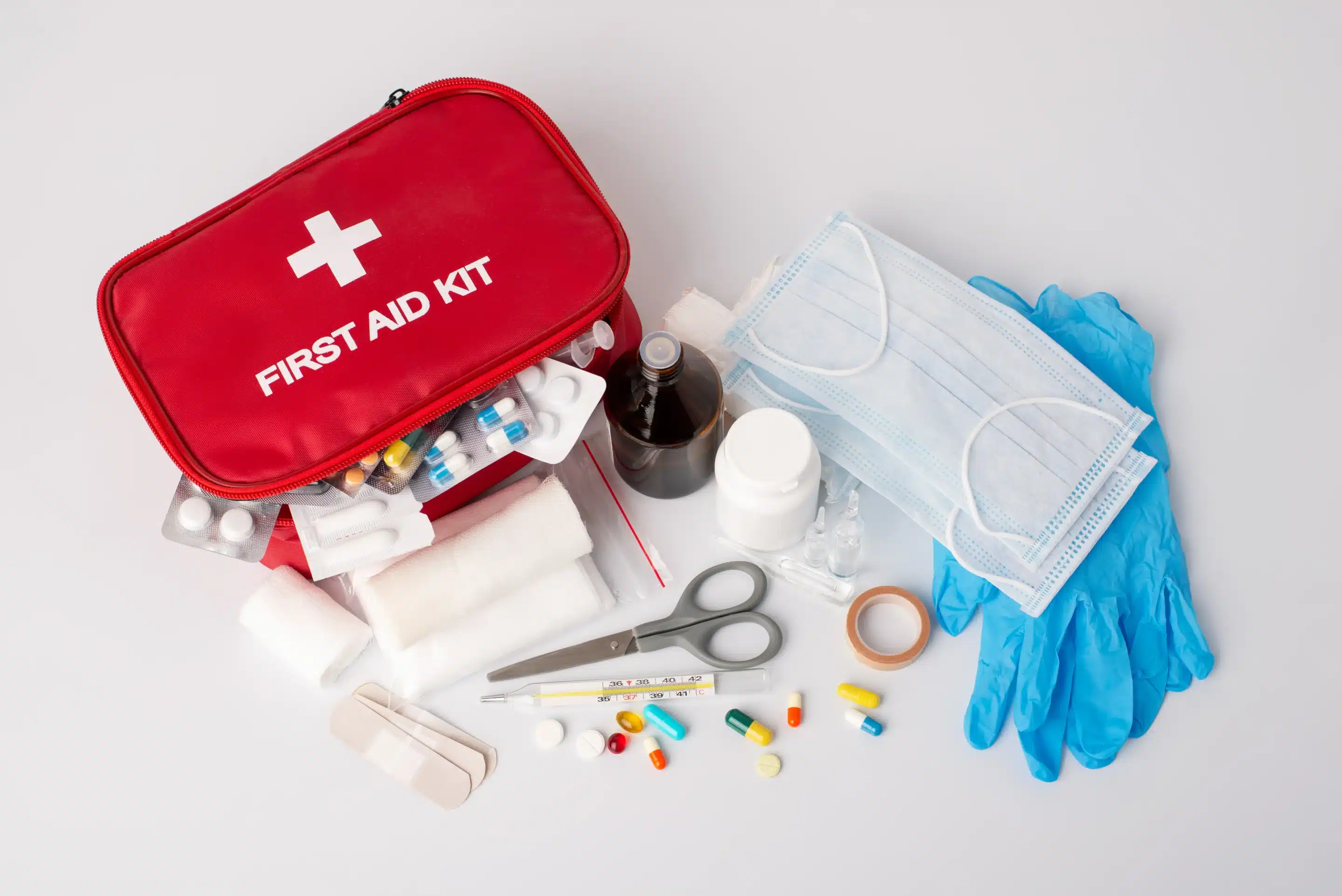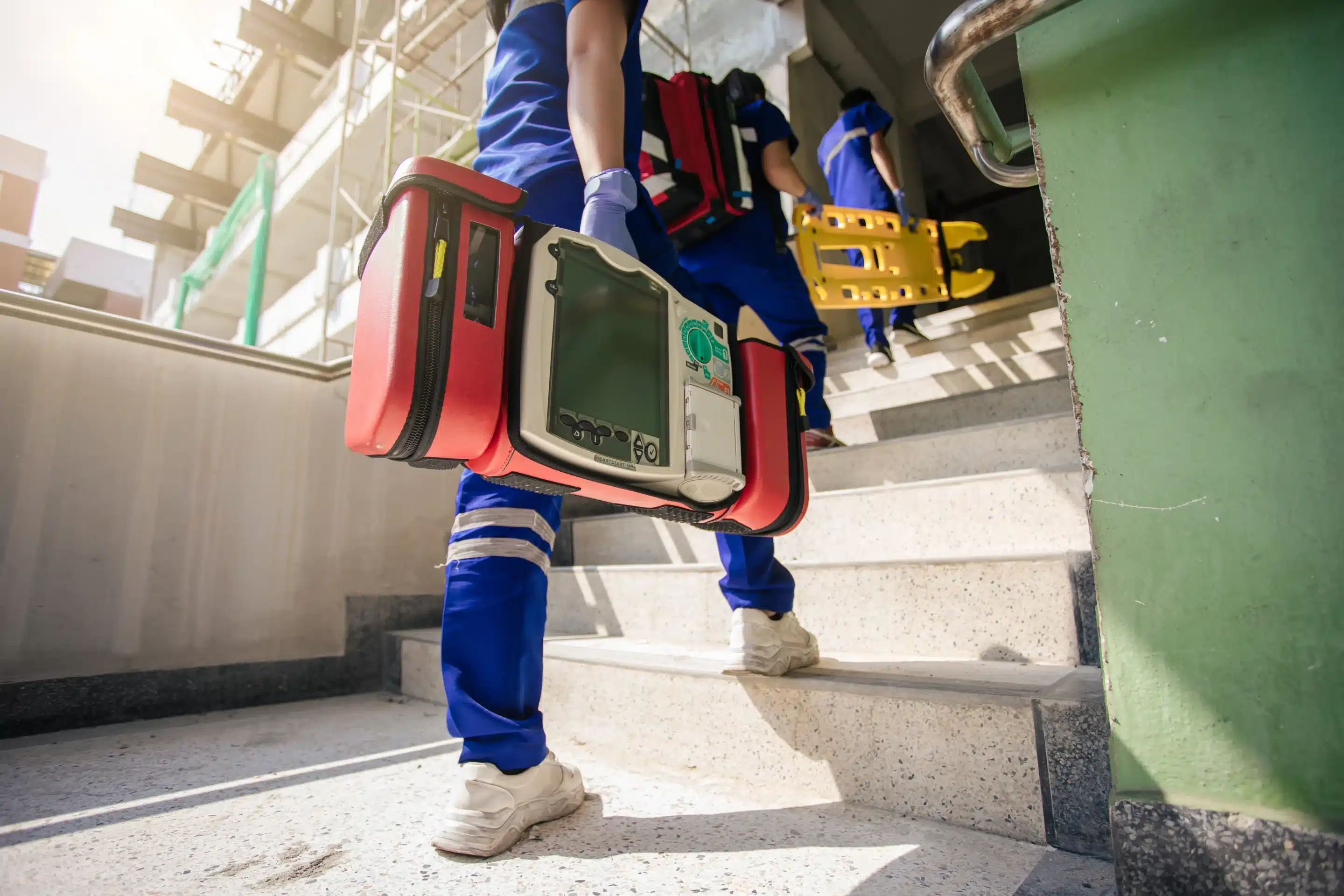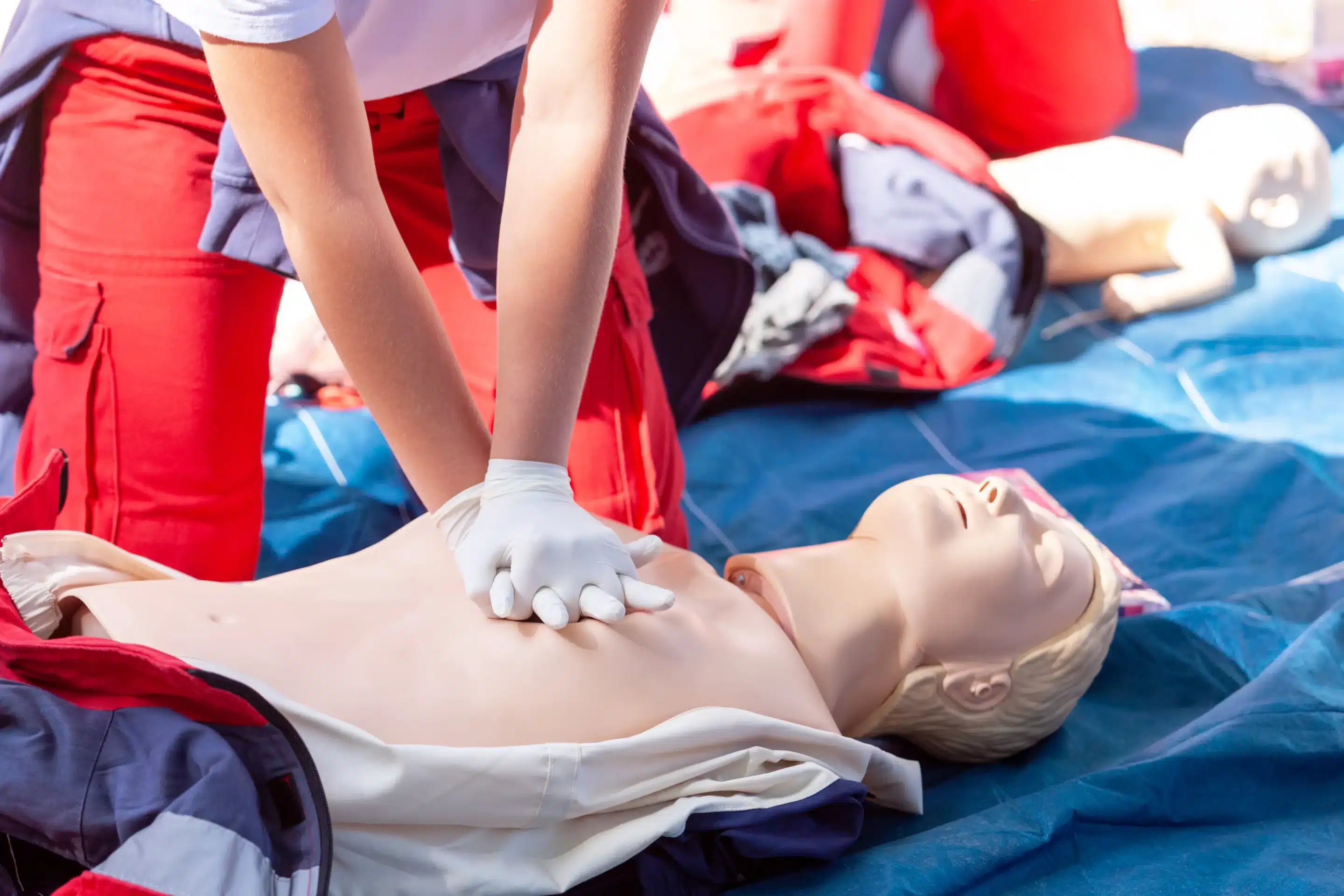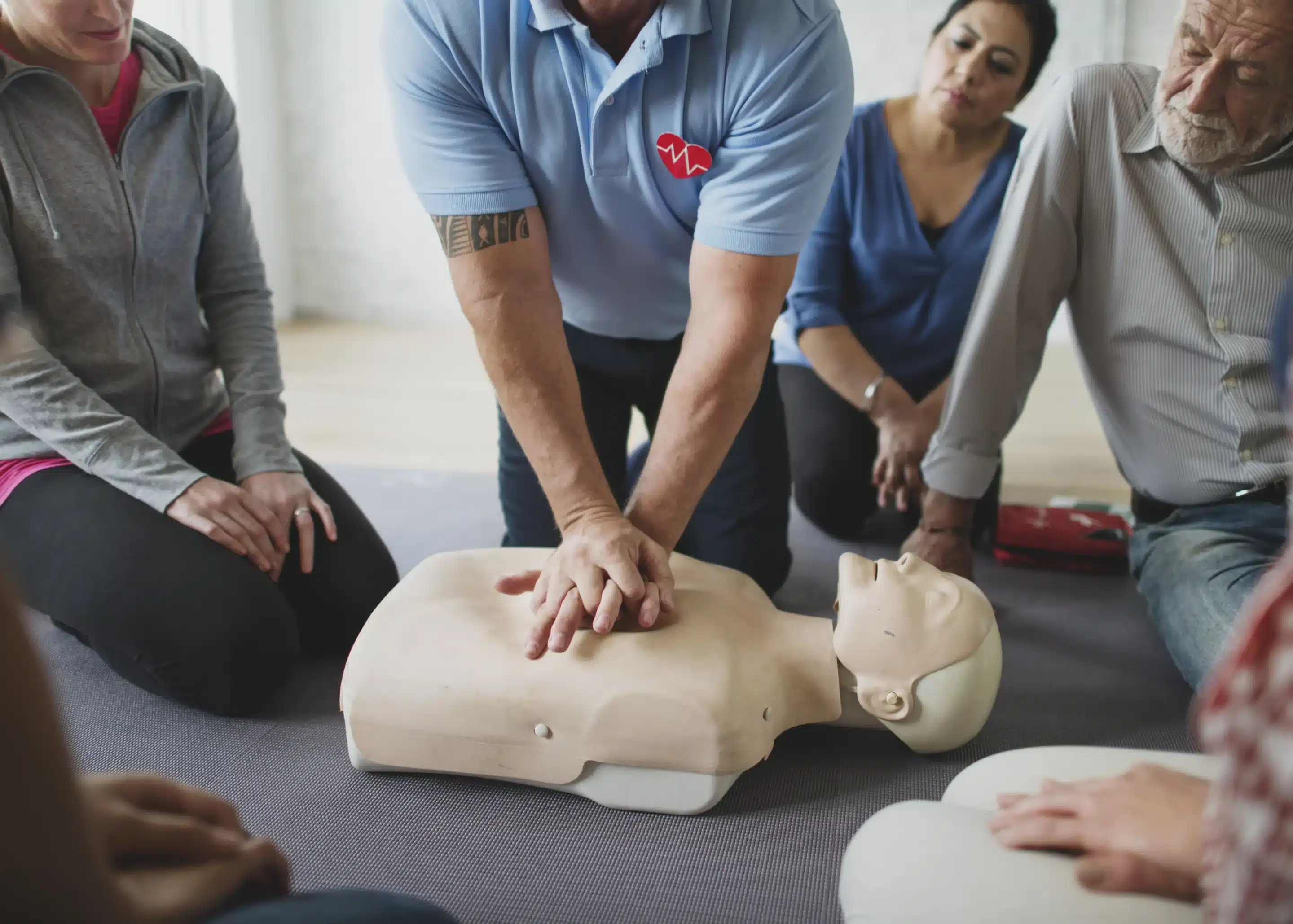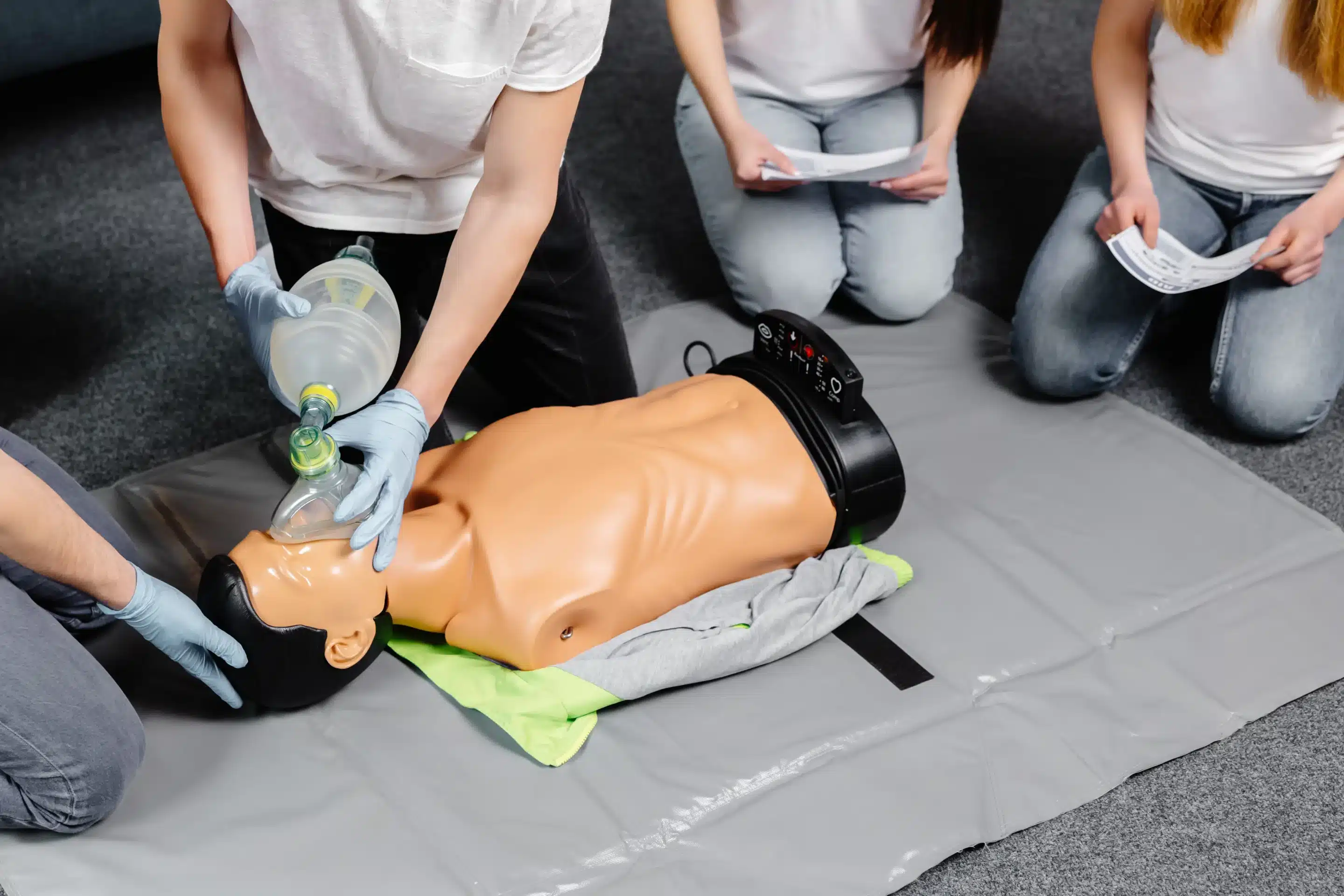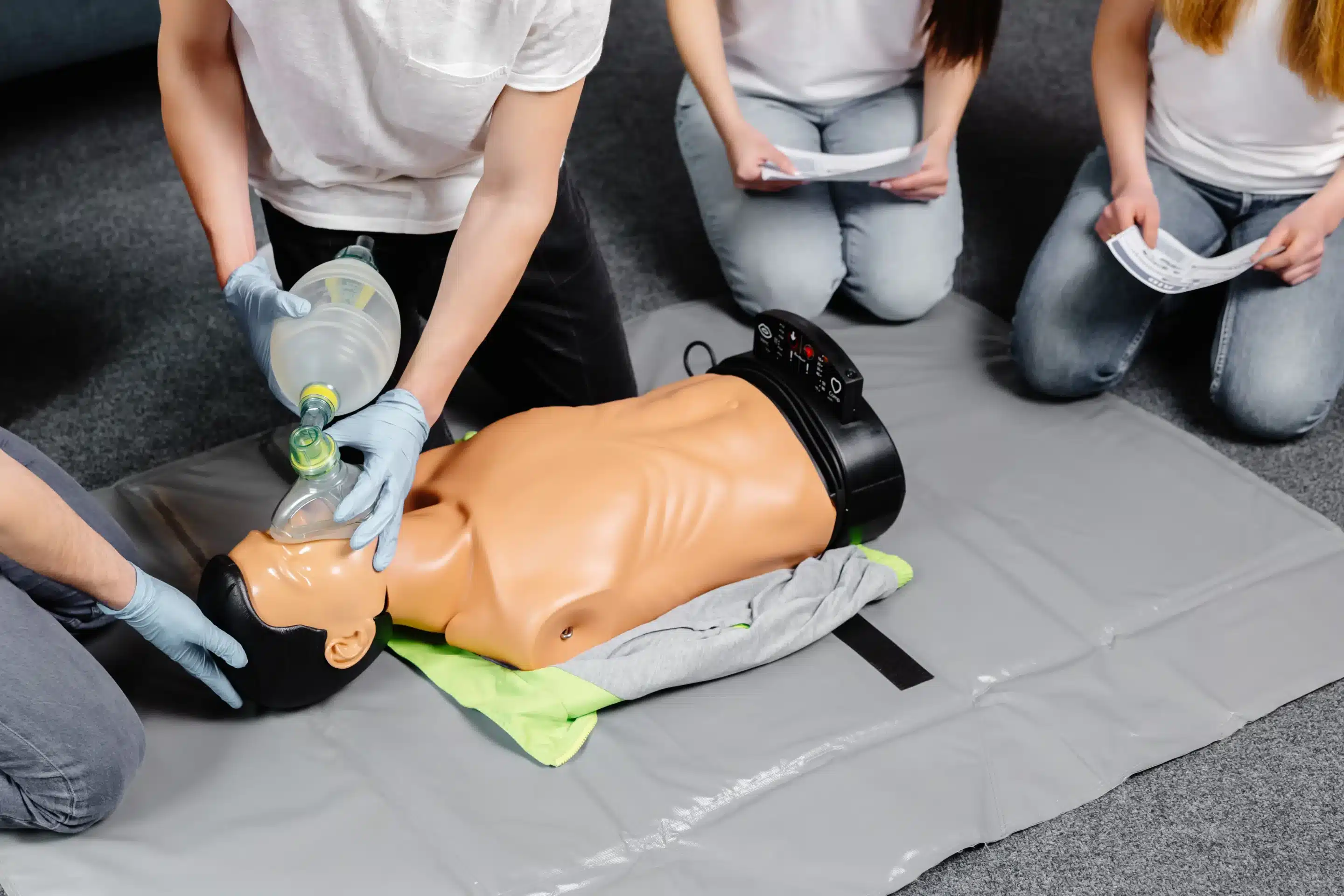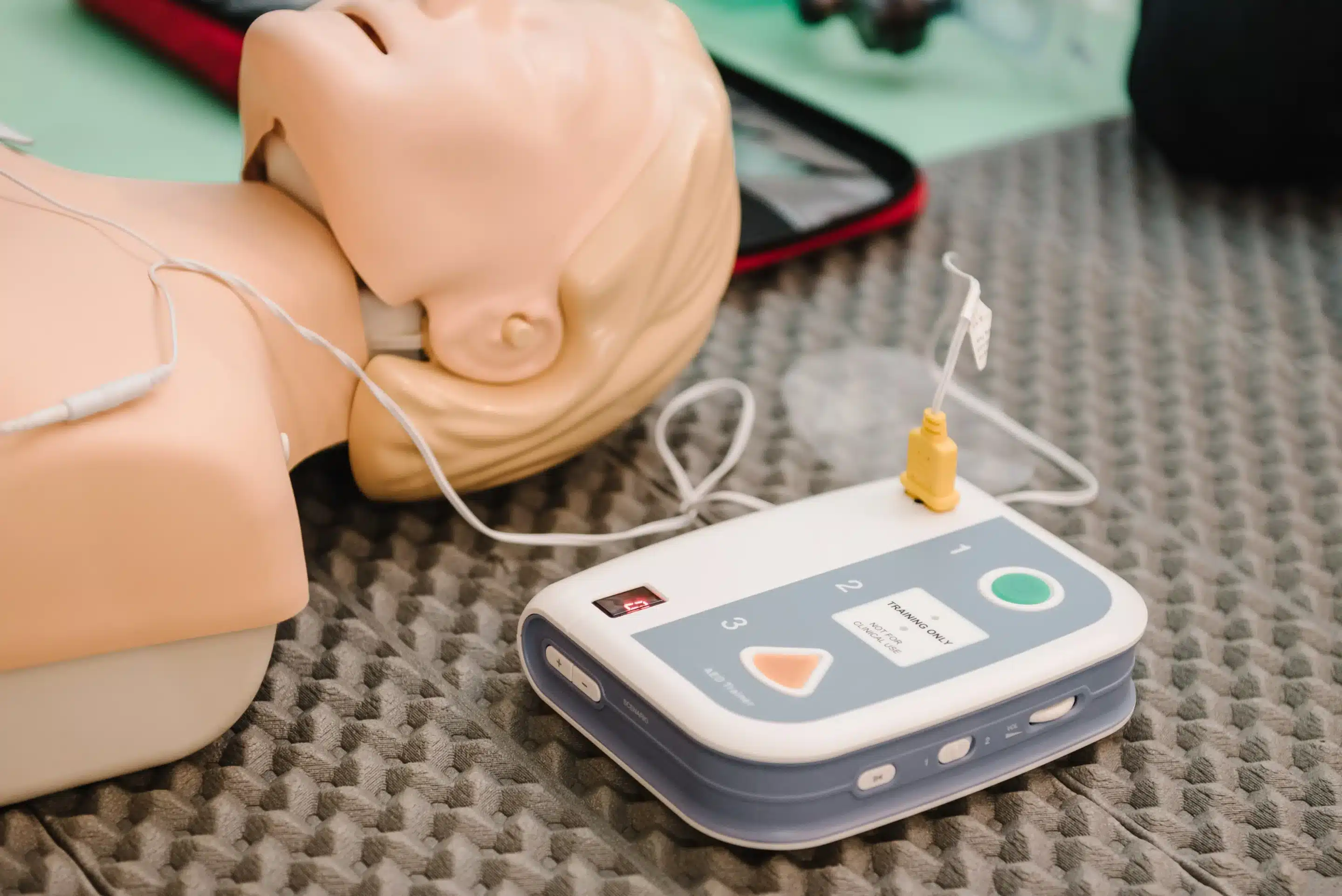Life is full of unexpected twists and turns. Knowing how to handle a medical emergency is a skill that brings confidence and peace of mind. First aid training empowers you to act quickly and effectively in a crisis, providing crucial care until professional help arrives. This article guides you through the essentials of first aid training, from understanding basic skills to finding the perfect first-aid classes near me. We’ll explore various training options, including online courses, in-person classes, and specialized certifications, helping you choose the best fit for your lifestyle and goals.
Key Takeaways
- First aid skills are for everyone: Learning first aid equips you to handle various medical situations, from minor injuries to serious emergencies. Explore options like CPR/AED training, basic first aid, and specialized courses to find the best fit.
- Find the right class for you: Consider factors such as course content, instructor qualifications, and student reviews when selecting a first aid class. Think about your learning style and whether online, in-person, or blended learning suits you best.
- Maintain your certifications: Understand the different types of first aid and CPR certifications and their renewal requirements. Staying up-to-date ensures you have the most current knowledge and skills to provide effective care.
What is First Aid Training?
First aid training gives you the skills to handle medical emergencies until professional help arrives. It empowers you to confidently respond to a range of situations, from minor cuts and burns to more serious incidents like choking or a heart attack. Learning first aid means understanding how to assess a situation, provide immediate care, and potentially save a life. It’s a valuable skill set for anyone, whether you’re a university student, a parent, or simply someone who wants to be prepared for the unexpected. One student described their first aid training experience at the University of Northampton as learning truly life-saving skills.
Essential First Aid Skills
Essential first aid skills cover a broad range of techniques. You’ll learn how to control bleeding, manage burns, treat sprains and fractures, and perform CPR. Training also covers how to recognize and respond to allergic reactions, seizures, and other medical emergencies. These practical skills are applicable in various workplace settings, benefiting employees, managers, and even bystanders, as highlighted by By Grace CPR Compliance. Knowing how to react quickly and effectively can significantly impact the outcome of an emergency. STS First Aid emphasizes that in emergency situations, administering proper first aid can make all the difference.
Why First Aid Matters
First aid matters because it can be the bridge between life and death in critical situations. It’s not just about knowing what to do; it’s about having the confidence to act when it matters most. Having staff trained in CPR and first aid ensures a rapid response to emergencies, minimizing harm while waiting for professional medical assistance. An article discusses the professions that require CPR and first aid certification, underscoring the importance of these skills in various fields. SRO Health encourages more people to pursue first aid training to dispel common misconceptions and improve overall preparedness for emergencies.
Find the Right First Aid Class
Finding the right first-aid class depends on your specific needs and goals. Are you looking for a basic understanding of first aid or do you need more specialized training? Let’s explore some options.
CPR and AED Training
CPR and AED training are fundamental, life-saving skills everyone should consider learning. These courses teach you how to recognize cardiac arrest, perform CPR, and use an automated external defibrillator (AED). Bakersfield CPR Classes offers comprehensive CPR and AED training that meets American Heart Association guidelines. They provide a variety of courses, including BLS for healthcare providers and CPR/AED/First Aid for the general public. Knowing these skills can empower you to respond effectively during emergencies and potentially save a life.
Basic First Aid
Basic first-aid courses cover essential skills, from treating minor cuts and burns to managing sprains and fractures. These classes equip you with the knowledge and confidence to handle everyday injuries and medical situations. CPR and First-Aid certification classes in Bakersfield are a great option for gaining these fundamental skills. The curriculum includes theoretical knowledge and practical, hands-on components, ensuring you’re prepared to respond effectively to various emergencies.
Specialized First Aid Courses
Beyond basic first aid and CPR, specialized courses are designed for specific needs and professions. For healthcare professionals, advanced courses like ACLS and PALS are crucial for managing complex medical emergencies. These courses cover advanced life support techniques for adults, children, and infants. Other specialized courses, such as wilderness first aid, focus on providing care in remote environments. Consider your individual circumstances and choose a specialized course that aligns with your specific requirements. For example, the EMSA Child Care Health and Safety program is an excellent choice for childcare providers. If you need to renew your certifications, Bakersfield CPR Classes offers renewal courses for BLS, ACLS, and PALS.
Locate First Aid Classes Near You
Finding the perfect first aid class is easier than you think. Whether you prefer online convenience or in-person instruction, several avenues are available.
Online Search
Start by searching online. Websites like Dreambound list first aid training programs, including online options. Filter by location, budget, and specific requirements. This lets you quickly compare courses from different providers.
Community Resources
Check with your local community resources. Many fire departments offer free CPR, AED, and first aid courses periodically. Community centers, libraries, and recreation departments may also sponsor training. Contact them directly to learn about upcoming opportunities. Don’t forget to check with your local Bakersfield CPR training center for in-person classes.
American Red Cross
The American Red Cross offers various course formats, including online, in-person, and blended learning (a mix of online and in-person instruction). Visit their website to locate a class in your area.
Select the Best First Aid Class
Finding the right first aid class requires a little more effort than a quick Google search. Think about your specific needs, the course content, the instructor’s qualifications, and what past students have to say. Evaluating these factors will help you find the best training for you.
Assess Your Needs
Before you begin searching for first aid courses, consider what you want to gain from the training. Do you prefer a traditional classroom or the flexibility of online learning? Online courses offer convenience, while in-person classes provide hands-on practice and interaction with the instructor and other students. Blended learning, a mix of online and in-person instruction, is another option. Also, think about your learning style and whether your workplace requires a specific certification. Some professions require certifications from organizations like the American Heart Association or the American Red Cross.
Compare Course Content
First aid classes differ in their content. What’s covered can vary based on who’s offering the course and who it’s designed for. Prioritize courses covering essential skills like CPR, using an AED, and treating common injuries like burns, cuts, and sprains. If you work in healthcare or childcare, you might need more specialized training. Bakersfield CPR Classes offers a variety of American Heart Association courses, including BLS, ACLS, PALS, and the EMSA Child Care Health and Safety program, to meet a range of professional needs.
Check Instructor Qualifications
A qualified instructor is key to a good first aid class. Look for certified instructors with real-world experience. Instructors who are also healthcare providers can offer valuable insights and answer your questions thoroughly. A comfortable and encouraging learning environment, like the one Healthline First Aid provides, can make all the difference in how much you learn.
Read Reviews
Checking out past student reviews is a smart way to evaluate a first aid class. Look for reviews on the provider’s website or on sites like Yelp or Google Reviews. A large number of positive reviews, such as those on the National CPR Foundation website, can give you confidence in the training. Pay attention to comments about the instructor’s teaching style, the course material, and the overall learning experience.
Understand First Aid Class Costs & Value
Understanding the cost and value of first aid training is an important step. While there’s an investment involved, the skills you gain can make a real difference.
Typical Prices
First aid and CPR training often involves a blended learning approach, combining online learning with an in-person skills session. Combined CPR and first aid certification courses typically cost around $140, covering both the online and in-person components, including your certification card. For specific pricing and options, take a look at the CPR and First Aid Certification Courses offered by Bakersfield CPR Classes.
Discounts
If cost is a concern, look for training centers that offer discounts. Many providers offer reduced rates for group bookings—a smart choice if you’re signing up with friends, family, or coworkers. You might also find student discounts or other promotions. Resources like the Bakersfield CPR Classes blog can offer insights into potential cost savings.
Financial Aid
If you’re on a tight budget, explore free or low-cost first aid and CPR training options. Your local fire department may offer free courses periodically. Joining your local Community Emergency Response Team (CERT) can also provide first aid and CPR training as part of the program. Check online forums like Reddit for additional resources and potential opportunities in your area.
Prepare for Your First Aid Class
Getting ready for a first aid class involves a little more than just signing up. Knowing what to expect—in terms of format, materials, and the learning experience—can help you feel confident and prepared to make the most of your training. A bit of mental preparation can also be helpful, especially if you’re new to first aid.
Class Format & Duration
First aid classes are designed to fit a variety of schedules and learning styles. You’ll find options for completely online, self-paced learning, traditional in-person classroom settings, and blended learning that combines online coursework with in-person skills sessions. The Red Cross offers a range of these formats. Course duration varies depending on the content covered and the format you choose. Online courses offer flexibility, while in-person classes provide immediate feedback from certified instructors.
Required Materials
Most first aid courses don’t require you to purchase materials in advance. The course fee often covers any necessary supplies used during the training, such as bandages, gloves, and CPR practice mannequins. Some courses may suggest a first aid manual or guidebook to supplement your learning. Check with your chosen provider, like Bakersfield CPR Classes, to confirm any specific material requirements. The Red Cross sometimes offers discounts on training materials, so it’s worth checking their website.
Hands-on Learning
Hands-on practice is a crucial part of first aid training. You’ll practice essential skills, like CPR and bandaging, in a safe and controlled environment. Healthline First Aid notes that classes are often taught by healthcare providers who create a relaxed atmosphere for learning. Bakersfield CPR Classes emphasizes this practical application of skills through hands-on training. This approach helps build muscle memory and confidence in your ability to respond effectively during a real emergency.
Emotional Preparation
Learning first aid can be empowering, but it’s also normal to feel a range of emotions. You’ll learn about potentially serious situations, and the responsibility of providing aid can feel significant. The Red Cross acknowledges that learning these skills can build confidence in emergencies. Remember that everyone starts somewhere, and your instructors are there to support you. Be open to learning and ask questions. One blogger shared their personal first aid experience, highlighting that real emergencies can be unpredictable. Focus on absorbing the information and practicing the skills—you’re developing valuable, life-saving abilities.
Know Your First Aid Certifications
Understanding the different types of first aid and CPR certifications, along with their validity and renewal requirements, is key to choosing the right course. Let’s break down the essentials.
Certification Types
First aid and CPR certifications aren’t one-size-fits-all. They’re designed for various professional and personal needs. For healthcare providers, certifications like Basic Life Support (BLS), Advanced Cardiovascular Life Support (ACLS), and Pediatric Advanced Life Support (PALS) are often required. These certifications cover a range of life-saving techniques specific to medical professionals. Other certifications, such as CPR/AED and First Aid, are valuable for anyone, from teachers and childcare providers to parents and community members. Choosing the right certification depends on your current role and goals. If you’re unsure which certification is best, reach out to a training provider like Bakersfield CPR Classes for guidance. They can help you understand the different options and select the one that aligns with your specific needs. Consider also certifications like the EMSA Child Care Health & Safety program specifically designed for childcare providers.
Validity & Renewal
Most first aid and CPR certifications are valid for about two years. Staying current with the latest guidelines and techniques is critical for providing effective care in an emergency. Regular renewal ensures you’re up-to-date on best practices and maintains your proficiency in life-saving skills. Check with your certifying organization or training provider for specific renewal requirements and available renewal courses. Don’t let your certification lapse – keeping your skills sharp can make all the difference. For healthcare professionals needing to renew their certifications, programs like RQI offer a flexible and convenient option.
Explore Top First Aid Class Providers
Finding the right first aid class involves more than just a quick search. You’ll want to consider the provider’s reputation, course content, and available certifications. To help you in your search, let’s look at some leading first aid training providers.
American Red Cross
The American Red Cross is a well-known humanitarian organization offering a range of first aid training classes, from basic first aid and AED use to specialized courses like babysitting and lifeguarding. Their established presence and comprehensive curriculum make them a reliable choice for many.
American Heart Association
The American Heart Association (AHA) focuses on CPR and first aid training. You can find AHA-certified courses through providers like Healthline First Aid, which offers comprehensive training and certification in CPR, first aid, and AED use. This ensures you’re receiving high-quality, up-to-date instruction.
National Safety Council
If you’re looking for affordable and accessible online options, the National Safety Council offers online CPR, first aid, and bloodborne pathogens training. Their convenient online format and budget-friendly pricing make them a practical choice for those balancing busy schedules or tight budgets.
St. John Ambulance
St. John Ambulance provides a variety of first aid courses designed for different skill levels and needs. They offer everything from basic to advanced training, allowing you to choose the course that best suits your current knowledge and goals. St. John Ambulance is a trusted international organization.
Local Fire Departments & Hospitals
Often, your local fire department or hospital will offer free or low-cost CPR, AED, and first aid classes. Check with your local fire department or hospital for schedules and availability. These community-based courses are a great way to learn essential skills.
Bakersfield CPR Classes
For those in Bakersfield and Kern County, Bakersfield CPR Classes offers a comprehensive range of American Heart Association courses, including BLS, ACLS, PALS, and more. They provide daily classes with same-day certification, a convenient option for those needing quick and efficient training.
Related Articles
- First-Aid Training in Bakersfield: Your Guide – Bakersfield CPR Classes
- Essential Benefits of Workplace CPR and First-Aid Training
- CPR & First Aid Training in Bakersfield: Your Guide – Bakersfield CPR Classes
- Find CPR Classes Near Me: Your Complete Guide – Bakersfield CPR Classes
- Pediatric CPR & First-Aid Classes in Bakersfield – Bakersfield CPR Classes
Frequently Asked Questions
What’s the difference between basic first aid and CPR? Basic first aid focuses on treating common injuries like cuts, burns, sprains, and fractures. CPR, or cardiopulmonary resuscitation, specifically addresses life-threatening cardiac emergencies where someone’s heart has stopped beating. While distinct, both are valuable skills and are often taught together.
How do I choose the right first aid class for me? Consider your specific needs and goals. If you’re looking for general knowledge, a basic first aid and CPR course is a great starting point. Healthcare professionals or those in specialized fields may require more advanced certifications like ACLS or PALS. Think about your learning style too – do you prefer online learning or a traditional classroom setting?
How much does first aid training typically cost? Costs vary depending on the course type, location, and provider. Basic first aid and CPR combination courses often range from $75 to $150. More specialized training like wilderness first aid or advanced certifications for healthcare professionals will typically be more expensive. Look for potential discounts for group registrations or student rates.
How long are first aid certifications valid, and how do I renew them? Most first aid and CPR certifications are valid for about two years. Renewal requirements vary by certifying organization, but typically involve completing a refresher course. Check with your certifying organization or training provider for specific details on renewing your certification.
Where can I find first aid and CPR classes near me? Several resources can help you locate classes. Start with an online search, checking local community centers, hospitals, and fire departments. Organizations like the American Red Cross and the American Heart Association also offer courses through their websites and local chapters. Don’t forget to check local training centers like Bakersfield CPR Classes for courses in your area.


